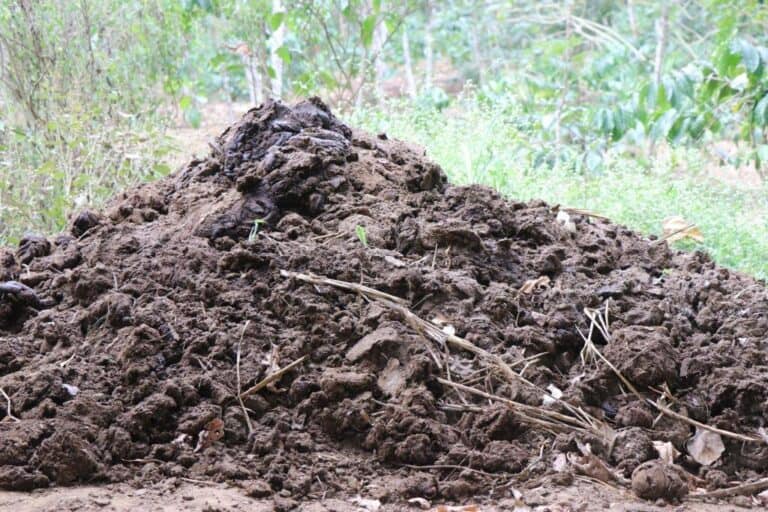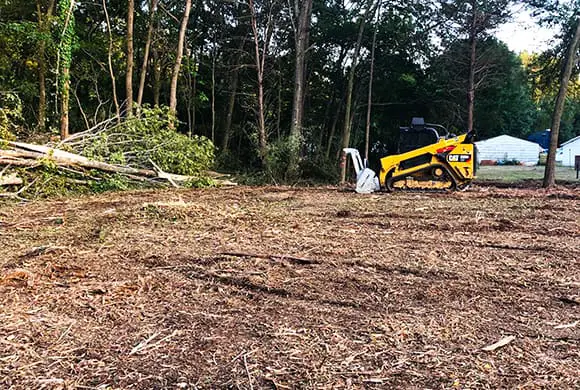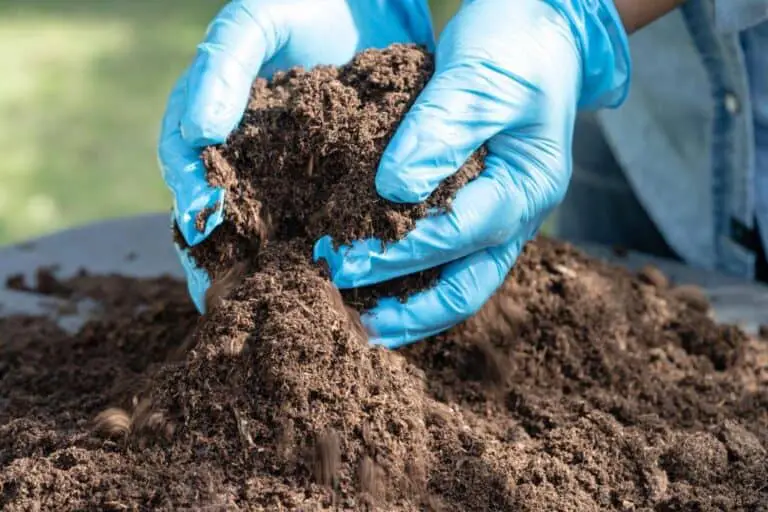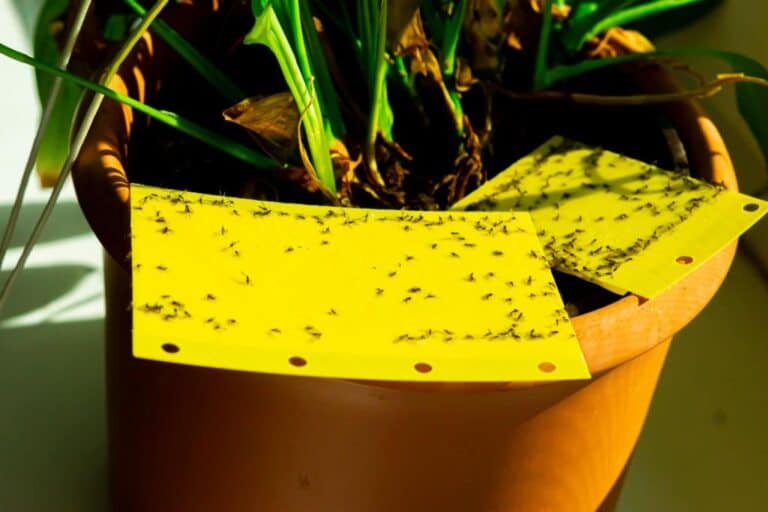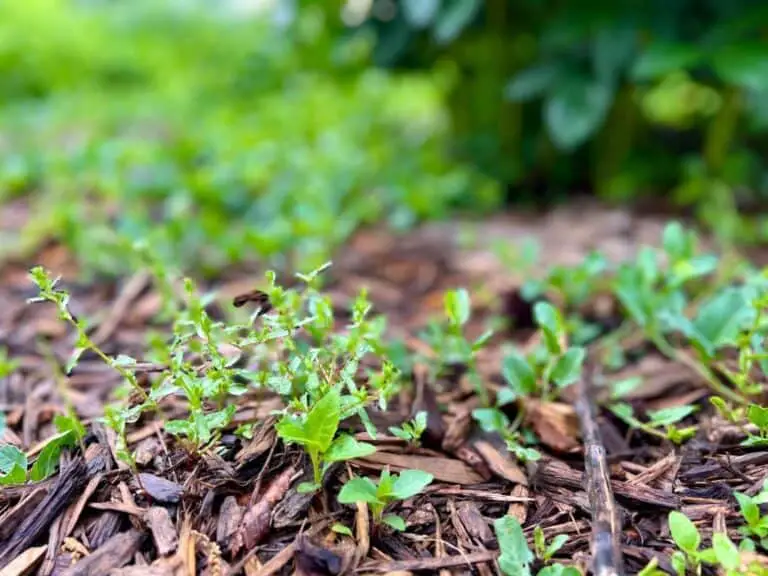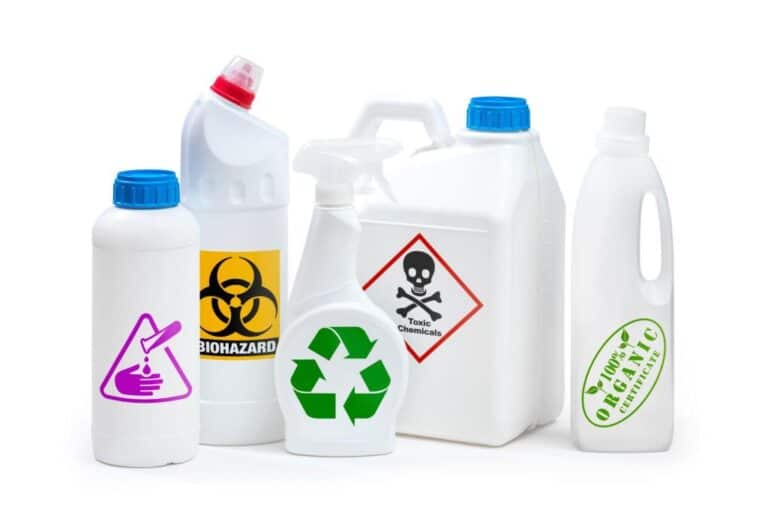Why Does Topsoil Have Much More Humus Than Subsoil?

As you walk through a garden or simply dig your fingers into the earth, you might notice something intriguing: the soil beneath your feet isn’t uniform. Near the surface, there’s this dark, crumbly, almost magical substance known as topsoil. But as you delve deeper, you encounter subsoil, which seems paler and less vibrant. So, what’s the secret behind this stark contrast, and why does topsoil have so much more humus than subsoil?
The answer lies in the complex structure of nature beneath our feet. It’s a story of life, decay, and renewal, where tiny organisms, roots, and organic matter shape the very essence of our soils.
In this journey, we’ll uncover the mysteries of humus, the dark elixir of fertility, and explore the factors that bestow topsoil with its richness.
So, let’s embark on this subterranean adventure, where science meets soil, to unveil the captivating tale of why topsoil reigns supreme in the realm of humus.
Understanding The Layers of Soil
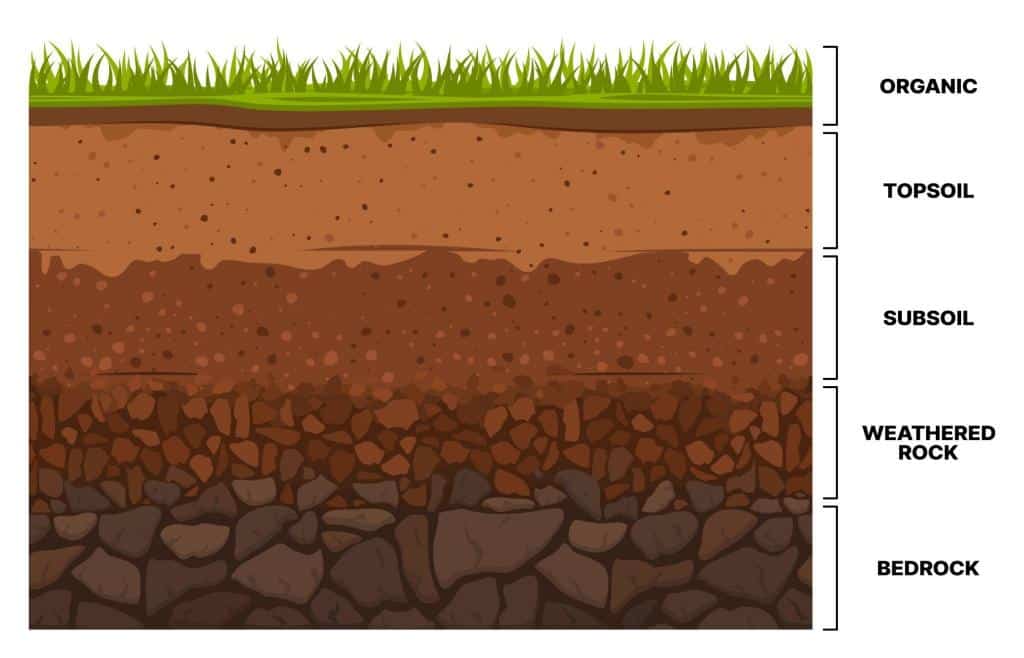
Before we dig into the mysteries of humus and its distribution, let’s briefly explore the different layers of soil. Soil is typically composed of three main layers: topsoil, subsoil, and bedrock. Each layer serves a unique purpose and is the result of various geological and environmental processes.
- Topsoil: This is the uppermost layer of soil, usually ranging from a few inches to a foot deep. It is the layer where most plant roots grow, and it’s teeming with life, including earthworms, bacteria, and fungi.
- Subsoil: Beneath the topsoil lies the subsoil, extending several feet deep. This layer contains fewer organic materials and is generally less fertile than topsoil. It plays a crucial role in water storage and transportation.
- Bedrock: Below the subsoil is the bedrock, a layer of solid rock that extends deep into the Earth. Plant roots cannot penetrate this layer, and it has a negligible role in nutrient storage or water retention.
Comparing Topsoil and Subsoil
To better illustrate the differences between topsoil and subsoil, let’s summarize their characteristics in a table:
| Characteristic | Topsoil | Subsoil |
| Depth | Shallow, typically a few inches to a foot | Deeper, extending several feet |
| Organic Matter Content | High | Lower |
| Humus Content | Abundant | Less |
| Microbial Activity | High | Lower |
| Nutrient Availability | Rich | Limited |
| Water Retention | Excellent | Lower |
| Soil Structure | Crumbly and well-aerated | Compact and less aerated |
Humus Composition and Formation
What is Humus? Humus is the dark, organic component of soil that forms as plant and animal matter decomposes over time. It’s often referred to as “black gold” for its role in enhancing soil fertility. Humus is not just dead organic material; it’s a complex mixture of partially decayed organic matter rich in essential nutrients.
One of the key differences between topsoil and subsoil is their organic matter content. Topsoil is generously infused with humus, making it a nurturing environment for plants. This organic wealth in topsoil is the result of continuous processes that replenish and enrich it.
The formation of humus is a fascinating natural process. A combination of environmental factors, biological activity, and organic input from plants and other organisms all have an impact on it. Let’s break these factors down further.
Now, let’s dive into the heart of the matter: why topsoil is richer in humus compared to subsoil.
The Role of Humus in Soil
To understand why topsoil contains more humus than subsoil, we must first grasp the significance of humus in the soil ecosystem. Humus serves several essential functions in the soil:
- Nutrient Storage: Humus has a high cation exchange capacity (CEC), which means it can hold and release essential nutrients like potassium, calcium, and magnesium, making them available to plants as needed.
- Water Retention: Humus acts like a sponge, holding onto water and preventing it from quickly draining away. This helps maintain soil moisture levels, especially during dry periods.
- Improved Soil Structure: Humus contributes to the crumbly texture of topsoil, enhancing its aeration and drainage properties. This is crucial for root growth and overall soil health.
- Microbial Habitat: Humus provides a habitat for beneficial microorganisms in soil, such as mycorrhizal fungi and bacteria, which assist in nutrient cycling and disease suppression.
Why Does Topsoil Have More Humus and Organic Richness Than Subsoil?
Topsoil has more humus and organic richness than subsoil due to the following reasons:
- Organic matter accumulation: Topsoil is the uppermost layer of soil, which is exposed to the atmosphere and receives organic matter from the decomposition of plants and animals. This organic matter accumulates in the topsoil, leading to a higher concentration of humus and organic richness.
- Biological activity: Topsoil is where most of the biological activity takes place, including the activity of microorganisms, insects, and worms. These creatures enrich the soil in two ways: from the organic matter in the form of their waste and from their bodies decomposing after death. This activity leads to the accumulation of humus and organic richness in the topsoil.
- Mineral content: Subsoil is located below the topsoil and contains less humus and organic matter. However, it is rich in minerals that are essential for plant growth. These minerals are leached down from the topsoil and accumulate in the subsoil, making it less fertile but rich in minerals.
- Leaching: Leaching, the process of water moving through the soil, plays a crucial role in distributing humus. Organic matter, including humus, is leached downward into the subsoil by percolating water. However, the rate of decomposition in the subsoil is slower due to reduced microbial activity, resulting in lower humus accumulation.
- Human Intervention: Human activities, such as mulching, composting, and the addition of organic fertilizers, can significantly boost humus levels in topsoil. Gardeners and farmers often take deliberate measures to enhance the organic matter content of their topsoil, recognizing the benefits it brings to plant growth.
- Climate and Vegetation: Climate and vegetation also play a role in humus distribution. Regions with lush vegetation and moderate climates tend to have more organic matter entering the soil, leading to higher humus levels in their topsoil.
Soil Testing and Analysis
To effectively manage topsoil and monitor humus levels, soil testing and analysis are essential tools. Soil testing involves collecting samples from different locations within a field or garden and sending them to a laboratory for analysis. The results provide valuable information about the soil’s nutrient content, pH levels, and organic matter, including humus.
Soil tests can specifically measure the humus content, helping farmers and gardeners understand whether their soil is humus-rich or in need of organic matter supplementation.
Soil pH is crucial for nutrient availability and microbial activity. It influences how effectively humus contributes nutrients to plants. Proper pH management is essential for maximizing humus benefits.
Soil tests also provide data on essential nutrients like nitrogen, phosphorus, and potassium, which are closely linked to humus-rich topsoil’s fertility.
Soil testing laboratories often provide recommendations for soil amendments based on the test results. These recommendations can help users tailor their soil management practices to improve humus content.
By regularly testing and analyzing soil, landowners can make informed decisions to optimize humus-rich topsoil for various agricultural and horticultural endeavors.
Conclusion
In the world beneath our feet, the distribution of humus in topsoil versus subsoil is a result of various interconnected factors. Humus-rich topsoil owes its dark, crumbly texture and nutrient abundance to a continuous input of organic matter and the bustling microbial activity that transforms it.
In contrast, subsoil, with its reduced organic matter input and slower decomposition rates, contains less humus, contributing to its distinct composition. This is the main reason why topsoil has more humus and organic richness compared to subsoil
Understanding these differences in soil layer composition is pivotal for gardeners, farmers, and environmentalists. It’s not merely an academic exercise; it directly influences soil fertility and humus content. By grasping the significance of these dynamics, we can employ soil conservation techniques that prevent soil erosion from robbing topsoil of its precious humus.
So, whether you’re nurturing a garden or studying soil science, the remarkable role of humus in our soils is a fascinating aspect of the natural world. It serves as a potent reminder of the intricate web of life beneath our feet, where nutrient storage in soil, microbial activity in topsoil, and organic matter in soil all converge to sustain life on Earth.
As we delve into enhancing topsoil humus and preserving soil health, let’s celebrate this invaluable resource and our responsibility to protect it for future generations.
FAQs on Soil Erosion Impact on Humus
What is the difference between topsoil and subsoil?
Topsoil is the uppermost layer of soil, rich in organic matter and nutrients, while subsoil lies beneath topsoil and has fewer organics, often with a higher clay content. Topsoil is where most plants grow, while subsoil primarily provides structural support and helps with water transport.
How does humus contribute to soil fertility?
Humus enhances soil fertility by improving nutrient retention, promoting microbial activity, aiding in water retention, and enhancing soil structure. It acts as a reservoir for essential nutrients, making them available to plants over time.
What are the effects of soil erosion on humus content?
Soil erosion can deplete humus content by removing the topsoil layer, which is rich in organic matter. This loss of humus diminishes soil fertility and reduces the soil’s ability to support healthy plant growth.
Are there natural methods to increase humus in topsoil?
Yes, natural methods include adding compost, using cover crops, reducing soil disturbance, and practicing crop rotation. These methods increase organic matter input and promote humus formation.
Can humus be depleted in the subsoil as well?
While subsoil may contain some humus, it is typically lower in organic matter than topsoil. However, excessive farming practices can deplete the humus in the subsoil over time.
What are some common indicators of humus-rich topsoil?
Signs of humus-rich topsoil include its dark color, crumbly texture, earthy smell, and good water-holding capacity. Healthy plant growth and thriving earthworm populations are also indicators.
Is it possible to restore humus in degraded topsoil?
Yes, you can restore humus in degraded topsoil by adding organic amendments like compost and mulch, reducing soil disturbance, and practicing sustainable farming or gardening techniques.

